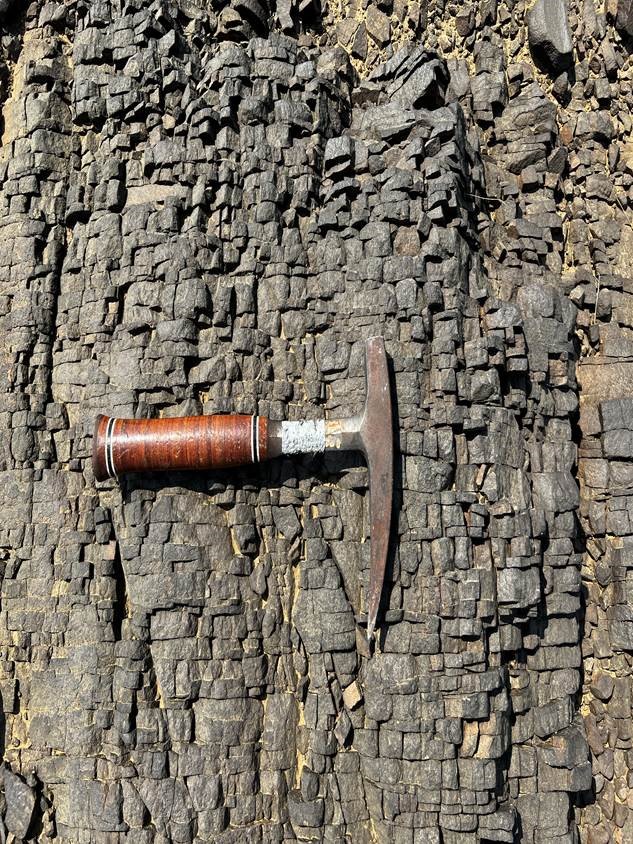
The Arabian Plate Geology Group ( APG ) started a research project in 2019 to evaluate the potential for CO2 mineralization in basaltic rocks of Saudi Arabia, funded by Aramco’s Environmental Protection Department.
The scope includes the Cenozoic Harrat volcanic fields (M Miliausha Petrova, M.S., 2021) and the Jizan Group volcanics (Jose Eduardo Torres, M.S, 2020, and Murtadha Al Malallah, M.S., 2021). Postdoc Jakub Fedorik and his collaborators focused on fracture analysis of the Jizan volcanics, which is essential to build and simulate a fractured reservoir model by Professor Hussein Hoteit and his Group.
This model will be used by Saudi Aramco for a pilot CO2 disposal well near Jizan Economic City.

Visiting geologists examine the outcrop of the Jizan Group.
Left to Right: Dr. Serguey Arakadakskiy (Aramco), Dr. Jakub Fedorik (KAUST) and
Professor Sigurdur Gislason (University of Iceland)

Geologic map and cross-section in the Jizan area based on integrated outcrop and
geophysical data

Densely fractured basalt in the Jizan volcanics. The fractures are essential to
conduct dissolved CO2 in the formation and to provide a large surface area
for water-rock reactions.